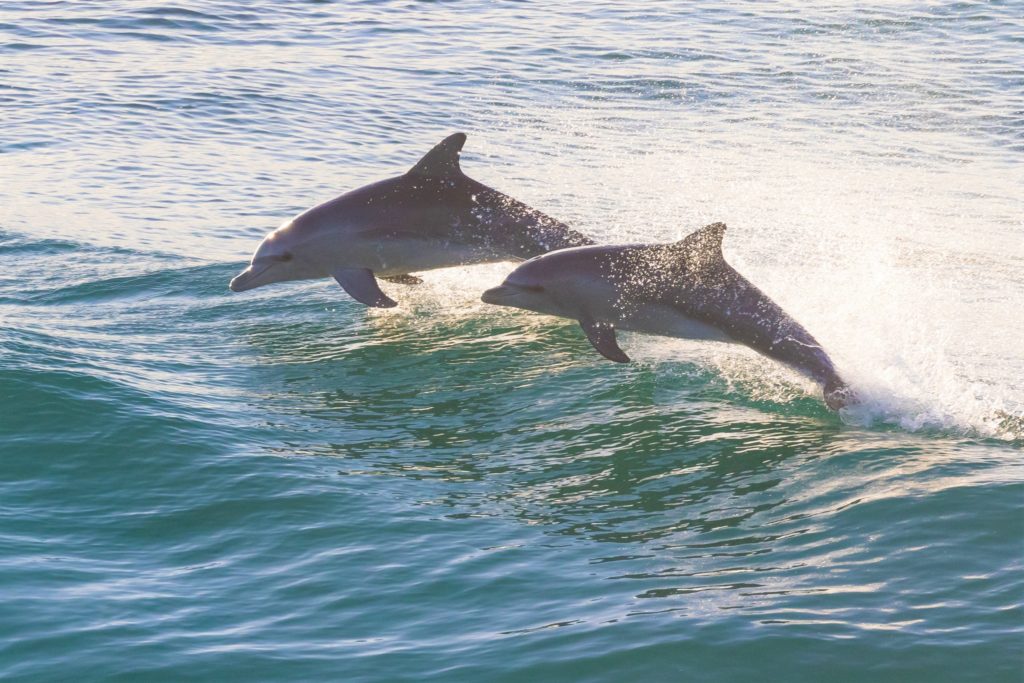When we hear the term “ecological corridors” we tend to think of the natural pathways that land animals like elk or elephants use to move among larger natural areas to eat, drink, mate and meet other survival needs. Corridors are equally important for marine life like whales, turtles, fish, and seabirds, which depend on linkages between ocean areas for daily movement, seasonal migration, and completing their life cycles. Until recently, collaborative research and guidance on marine ecological connectivity had been lacking, but now the Center for Large Landscape Conservation is supporting coordination of work by a unique group of experts that is making the issue a top priority.
The ocean is critical for sustaining a healthy planet. Consider these facts:
- The ocean produces over 50% of our oxygen.
- It regulates global temperature and weather.
- It provides nearly 7% of all protein consumed by humans.
- Almost 71% of the Earth’s surface is covered by the ocean.
- Only about 8% is protected from increasing human pressures such as extraction, pollution, and fragmentation that are threatening its natural processes, habitats, and species.
 As part of its efforts to conserve the interlinkages of ecosystems to stem biodiversity loss and climate change, the Center operates the Marine Connectivity Working Group (MCWG). This network of experts with diverse interests—such as coral biologists, marine spatial planners, and ocean policy advisors—is now providing connectivity conservation solutions for better managing and sustaining the marine and coastal environment.
As part of its efforts to conserve the interlinkages of ecosystems to stem biodiversity loss and climate change, the Center operates the Marine Connectivity Working Group (MCWG). This network of experts with diverse interests—such as coral biologists, marine spatial planners, and ocean policy advisors—is now providing connectivity conservation solutions for better managing and sustaining the marine and coastal environment.
Considering that connectivity research for the ocean is much less advanced than for land, marine experts encouraged the creation of MCWG to be dedicated to expanding the field and its applications. Now, with over 90 expert volunteer members from more than 25 countries on six continents, the group is promoting more consistent marine connectivity policies, programs, and practices through collaboration in science, planning, management, and governance. Together, this growing community of marine experts is working to better address the unique aspects of marine ecological connectivity.
2021 was a watershed year for MCWG and the following brief list highlights some of the activities resulting from its collaboration and leadership:
- Publishing Marine Connectivity Conservation ‘Rules of Thumb’ for MPA and MPA Network Design to support more consistent efforts to implement solutions for marine protected areas and increase system-based conservation approaches for the management and protection of oceans and coasts.
- Writing 15 case studies covering 31 countries that exemplify the ‘Rules of Thumb’ and featuring them in a layer on globescapes.org;
- Publishing the article Advancing marine conservation through ecological connectivity: Building better connections for better protection in the journal Parks Stewardship Forum;
- Supporting planning and participating in the first and second “Deep Dive on Ecological Connectivity” webinars organized by the North American Marine Protected Areas Network (NAMPAN) which brings together resource agencies, managers, practitioners, and other experts across Canada, Mexico, and the United States;
- Developing and circulating a survey on the applicability of the Marine Connectivity Conservation ‘Rules of Thumb’ to eight international MPA networks to gauge current gaps in knowledge in the field of marine connectivity, and publishing Survey Findings: Marine Connectivity Applications in MPAs.
- Presenting the work of MCWG and the ‘Rules of Thumb’ during the symposium “Advancing consistent and measurable global ecological connectivity implementation” at the 2021 International Congress on Conservation Biology;
- Operating the MCWG webpage to continue to promote the group’s work, including the MCWG Library and an ongoing collection of Marine Connectivity Policy Resources.
The Center thanks MCWG members for their time and efforts pioneering ways to establish marine connectivity conservation as an essential component of national, transboundary, and global policies, as well as on-the ground efforts that achieve long-term ecological integrity of marine and coastal environments.
VIDEO: Learn about one example of a marine ecological corridor and how science is helping countries to conserve it. (1 min, 45 sec)



